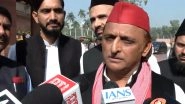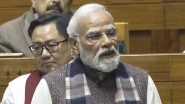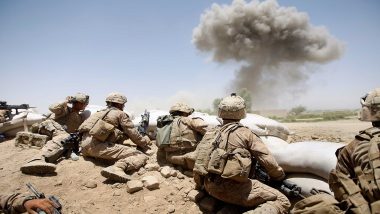Earlier this year, the 'Doomsday Clock' was moved to 11:58, just 2 minutes from 12 ‘o’ clock i.e. end of the world, symbolizing the precarious state of the world today. We are indeed under a constant threat from the possibility of a nuclear war breaking out as tensions rage between countries like the U.S. and North Korea or U.S. and Russia or even India and Pakistan.
But interstate conflict is not the only threat to the world today, as intrastate conflict or civil wars pose a more immediate danger to millions of people across the world. After the end of the World War II, the past decade has seen a considerable rise in the scale and number of civil wars across the world.
For the purpose of this article, we look at civil wars occurring as well as ongoing within the last two decades i.e. 2000-till date.
The term “civil war” comes from the Latin phrase bellum civile, which translates to “war of or pertaining to civilians,” and was first used to describe the Roman civil wars of the 1st century BCE.
1. Afghanistan: In India’s immediate neighbourhood, the nation of Afghanistan has been embroiled in an intrastate conflict for almost two centuries with brief periods of relative calm. Afghanistan was never colonialized and in the two instances that the British managed to exert a level of influence, it was shortly followed by a rebellion. This has characterized the state of Afghan affairs since the 1830s now.
Afghanistan has seen fighting to install kings, to overthrow kings, constitutional monarchies, generals taking over, tribal war lords controlling huge tracts of land across provinces and finally becoming an arena for the proxy war between the then USSR and U.S.
Since the toppling of the Taliban government by the U.S. and its coalition forces in 2001, there has been an attempt to install a democracy in Afghanistan but at no time has the entire country ever come under the rule of the Afghan government. The Afghan people have seen a tremendous amount of bloodshed and there is no end in sight with the Taliban forces reportedly again gaining ground against the Western-backed democratic government of Ashraf Ghani. The conflict since 2001 has claimed an estimated 105,000 lives in Afghan war. More than 31,000 of those killed have been civilians. An additional 41,000 civilians have been injured since 2001.
2. Iraq: In March 2003, U.S. forces invaded Iraq vowing to destroy Iraqi weapons of mass destruction (WMD) and end the dictatorial rule of Saddam Hussein. Despite the defeat of conventional military forces in Iraq in May 2003, an insurgency in the form of an intense guerrilla war in the nation has continued in the years since military victory was announced, resulting in thousands of coalition military, insurgent and civilian deaths.
After capturing Saddam, the U.S. tried to install a government but failed to understand the fault lines running through Iraqi society. Sectarian violence and U.S.’s unwillingness to put more boots on the ground saw huge swaths of Iraqi territory captured by a terrorist group called the Islamic State or Daesh. The Islamic State unleashed its own version of brutality in the areas it captured.
The Islamic State was defeated after a coalition of state and non-state actors put up a concerted fight against it for over two years. An estimated 200,000 civilians have died, since the invasion of Iraq.
3. Syria: The war in Syria started out as popular protests in 2012 but has now become a protracted proxy war between the old Syrian regime, rebel forces and the Islamic State. The war in Syria is often referred to as a tinder box as eight countries – Syrian government, U.S., Russia, Iran, Israel, Saudi Arabia, Turkey, and Lebanon who are also regional foes are facing off against each other.
Estimates of deaths in the Syrian Civil War, per opposition activist groups, vary between 346,612 and 481,612. On 23 April 2016, the United Nations and Arab League Envoy to Syria put out an estimate of 400,000 that had died in the civil war. This number only keeps inching up as the Syrian government continues its unabated attack on rebel held areas with the support of Russia and Iran.
4. Yemen: The Yemeni Civil War is an ongoing conflict that began in 2015 between two factions, each claiming to constitute the Yemeni government, along with their supporters and allies. The conflict has its roots in the failure of a political transition supposed to bring stability to Yemen following an Arab Spring uprising that forced its longtime authoritarian president, Ali Abdullah Saleh, to hand over power to his deputy Abdrabbuh Mansour Hadi, in 2011. President Hadi struggled to deal with a variety of problems, including attacks by al-Qaeda, a separatist movement in the south.
The Houthi movement, which champions Yemen's Zaidi Shia Muslim minority and fought a series of rebellions against Saleh during the previous decade, took advantage of the new president's weakness by taking control of their northern heartland of Saada province and neighbouring areas. On 25 March 2015, an international coalition led by Saudi Arabia launched air strikes against the Huthi armed group in Yemen sparking a full-blown armed conflict. Over the following two years, the conflict has spread and fighting has engulfed the entire country.
Yemen has also become a proxy war between regional rivals Saudi Arabia and Iran with each supporting its factions through arms, and funding. However, life has become hell for the civilian population with the United Nations describing it as the ‘worst famine in decades’. According to the BBC, the conflict in Yemen has killed or injured more than 49000 people and left 18.8 million requiring humanitarian aid.
5. Libya: The last decade has seen this country go through two civil wars. The first was fought in 2011 by the forces wanting to oust the country’s long-time rule Colonel Muamar Gaddafi and pro-government forces. Gaddafi ruled Libya for 42 years, making him the longest-reigning ruler in the Arab region.
After Gaddafi was captured and killed by rebel forces, the UN helped install a transition government. But this government soon became divided into factions and after a second round of general elections, the unrest blew up into a full scale armed conflict between competing groups. Libya today is ruled by different groups and continues to see violence across the country.
6. Egypt: In 2011 Egypt experienced mass protests culminating in the fall of long serving president, Hosni Mubarak. The time in power of the country's first democratically elected President, the Muslim Brotherhood's Mohamed Morsi, was short-lived. He was deposed by Egypt's military on 3 July 2013, following anti-government protests.
Abdel Fattah el-Sisi, who announced the overthrow of Morsi, then became the leader of Egypt the following year, winning election to the presidency in a landslide victory described by EU observers as free but not necessarily fair. Nonetheless, Sisi's election was widely recognized, and the political situation has largely stabilized since he officially took power; however, some protests have continued despite a government crackdown. The crisis has also spawned an ongoing insurgency led by Ansar Beit al-Maqdis in the Sinai peninsula, which became increasingly intertwined with the regional conflict against the Islamic State of Iraq and Syria later in 2014.
7. Somalia: The Somalian civil war began in early February 2009 with a conflict between the forces of the Federal Government of Somalia, assisted by African Union peacekeeping troops, and various militant Islamist groups and factions. The Islamic groups headed by Al-Shabab consider the current government a puppet of the West and have waged an insurgency since 2009. The l-shabab group has installed Islamic Sharia law in areas it controls and continued a guerilla operation against the government forces. According to Necrometrics, around 500,000 people are estimated to have been killed in Somalia since the start of the civil war in 1991.
8. Mali: As protests swept across the Middle East and Africa, in January 2012, several insurgent groups began fighting a campaign against the Malian government for independence or greater autonomy for northern Mali, an area of northern Mali they called Azawad. The National Movement for the Liberation of Azawad (MNLA), an organization fighting to make this area of Mali an independent homeland for the Tuareg people, had taken control of the region by April 2012.
While the rebels took the north, the country was hit by a coup in March 2012. President Amadou Toumani Touré was ousted in a coup d'état over his handling of the crisis a month before Presidential elections were to be held in the country. As a consequence of the instability following the coup, Mali's three largest northern cities—Kidal, Gao and Timbuktu—were overrun by the rebels. The MNLA proclaimed the freedom of northern Mali from the rest of the country and renamed it Azawad.
The MNLA were initially supported by Islamic groups like Ansar Dine but in-fighting led to the defeat of MNLA forces and the capture of northern Mali by Islamic groups comprising of Ansar Dine, Movement for Unity and Jihad in West Africa (Mujao), al-Qaeda in the Islamic Maghreb (AQIM), the Signed-in-Blood Battalion and the Islamic Movement for Azawad (IMA). According to a report in The Hindu newspaper, Ansar Dine and Mujao have expanded the rebellion beyond the Tuaregs by incorporating a number of other ethnic groups like the Bella and Songhai (who have historically opposed the Tuareg) into a multi-ethnic force, motivated by religious fervour.
The government of Mali called in help from international forces which helped retake northern Mali in 2013. A peace deal was reached in 2015 but the country continues to see sporadic terrorist attacks. The armed Islamic groups also operate in the remote lands of Mali and have reportedly given support to Boko Haram fighters in Nigeria.
Human Rights Watch observes that the attacks, and the failure to disarm thousands of combatants from Mali’s 2012-2013 armed conflict, has deepened the security vacuum, creating a precarious human rights climate for civilians in central and northern Mali.
9. Cabinda War in Angola: The war in Angola is often referred to as the country’s forgotten war as separatists have waged an armed conflict for more than 40 years. Cabinda is a province of Angola, separated from the country’s other seventeen provinces by a narrow strip of the Democratic Republic of Congo. The Front of the Liberation of the Cabinda enclave (FLEC) and its offshoots have been fighting a guerrilla war with the aim of securing independence since 1963. Initially, FLEC fought for independence from Portuguese rule but continued its separatist struggle after Angola gained independence on November 11, 1975.
The struggle to gain control of Cabinda goes back to 1800s when the control of the province was handed over by the Portuguese to Angola without allowing Cabinda a say, which till then had been a semi-autonomous region under Portugal’s rule. But the struggle for the past 40 years has seen the conflict center around the province’s oil reserves. The region produces more than half of Angola's oil and accounts for 86% of the state’s earnings.
After years of conflict, the FLEC-FAC signed a ceasefire agreement with the Angolese government in 2006 and call for a negotiated resolution of conflict in 2012. But, the country continues to see sporadic attacks and counter-offensive moves by the government which has made displaced thousands of Cabindans.
10. DR Congo: The Democratic Republic of Congo is slowly recovering from a conflict known as Africa's first world war, which led to the loss of some five million lives between 1994 and 2003, but many eastern areas are still plagued by violence as various rebel groups continue to operate there. The UN operates a peacekeeping mission in DR Congo since 1999. It is one of the biggest peacekeeping operations in the world, with almost 20,000 personnel on the ground. It is mandated to protect civilians and also help with the reconstruction of the country.
But a 2009 report by UN-commissioned experts said UN involvement had done nothing to quell the violence - with rebels continuing to kill and plunder natural resources with impunity, and claims that the rebels are supported by an international crime network stretching through Africa to Western Europe and North America.
Despite the stabilizing presence of UN peacekeepers, the stronger militant groups in the region, like the Democratic Forces for the Liberation of Rwanda (FDLR) and the Ugandan Allied Democratic Forces (ADF), continue to terrorize communities and control weakly governed areas of the country, financing their activities by exploiting the country’s rich natural resources. Millions of civilians have been forced to flee the fighting: the United Nations estimates that currently there are at least 2.7 million internally displaced persons in the DRC, and approximately 450,000 DRC refugees in other nations.
11. Central Africa: The Central African Republic conflict was a civil war in the Central African Republic (CAR) involving the government, rebels from the Séléka coalition and the Anti-balaka militias. In the Central African Republic Bush War, the government of President François Bozizé fought with rebels until a peace agreement in 2007.
In October 2013, the Seleka group, made up of a Muslim majority, rebelled against the government, accusing it of neglect and marginalization. They plundered entire towns and villages, leading to the formation of the anti-Balaka movement. Originally, a defense group comprising a majority of Christians, over time, the militia fell into the hands of uncontrollable gangs of armed youth.
In 2016, CAR voters elected an official government, but its power and control does not extend outside the capital, Bangui. Instead, the country has become increasingly polarized along religious and ethnic lines. Fourteen armed rebel groups are now active in the country. There are frequent clashes in which the civilian population is caught between the fronts. In the region around Koui alone, 15,000 people have had to flee their homes in recent months.
12. Sudan: The Second Sudanese Civil War was a conflict from 1983 to 2005 between the central Sudanese government and the Sudan People's Liberation Army. It was largely a continuation of the First Sudanese Civil War of 1955 to 1972. It lasted for 22 years and is one of the longest civil wars on record.
13. South Sudan: South Sudan is the world's newest nation, in the centre of Africa bordered by six countries. It is rich in oil, but following decades of civil war it is also one of the least developed regions on earth. Since South Sudan overwhelmingly voted to break away from Sudan in 2011, the government's main concern has been to get oil flowing following disagreements with Khartoum - production only resumed in April.
There have also been mass killings along ethnic lines. The country is awash with guns after the decades of conflict and there is a history of ethnic tension, which politicians could whip up if they believe that could help them gain, or remain in, power.
14. Ukraine: The Ukraine crisis has become the bloodiest European conflict since the wars over the former Yugoslavia in the early 1990s. Three years have passed since the start of Ukraine's "Revolution of Honour". The student protests organised to force President Viktor Yanukovych and Prime Minister Mykola Azarov to sign an association agreement with the EU developed into a revolution that overthrew the government and sparked a counter-revolution in Ukraine's eastern Donbas region.
The revolution, pushed against Russia’s insecurities of an expanding NATO which then saw Vladimir Putin push back in the form of Russia annexing Ukraine’s eastern region of Crimea.
In 2015, Kiev and Moscow signed the “Minsk agreement”, which stipulated a ceasefire and a special constitutional status for the rebel-held territories of the Donbass region, which would re-integrate into Ukraine and hold elections. None of that has come into effect and the number of ceasefire violations runs into the thousands. Since then about 10,000 people have died, including 3,000 civilians, and more than 1.7 million have been displaced. Aid agencies say that 4.4 million people have been directly affected by the continuing hostilities, while 3.8 million need urgent assistance.
Ukraine has since 2014 seen many anti-government protests from anti-corruption marches to pro-democracy demands and occupy movements.
Myanmar: The newly democratic nation of Myanmar is facing growing condemnation across the world for its treatment of its minority population, the Rohingyas. The Rohingya are an ethnic Muslim minority who practice a Sufi-inflected variation of Sunni Islam. Before August 2017, the majority of the estimated one million Rohingya in Myanmar resided in Rakhine State, where they accounted for nearly a third of the population. They differ from Myanmar’s dominant Buddhist groups ethnically, linguistically, and religiously. The majority Buddhist population claim the Rohingyas are illegal immigrants from Bangladesh and should go back. They are not considered as one of the country's 135 official ethnic groups and have been denied citizenship in Myanmar since 1982, which has effectively rendered them stateless. There are about 1.1 million Rohingya in the Southeast Asian country.
The latest exodus began on 25 August 2017 after reportedly Rohingya Arsa militants attacked more than 30 police posts. Rohingya villages were then attacked by troops, backed by local Buddhist mobs. Entire villages were burnt and there have been multiple reports of executions of Muslims by army troops. At least 6,700 Rohingya, including at least 730 children under the age of five, were killed in the month after the violence broke out, according to Medecins Sans Frontieres (MSF).
Amnesty International says the Myanmar military also raped and abused Rohingya women and girls. The UN says the Rohingya's situation is the "world's fastest growing refugee crisis". According to the most recently available data from the United Nations, more than 168,000 Rohingya have fled Myanmar since 2012.
The civil wars highlighted today have their roots going back decades which prove that long simmering tensions if not resolved erupt in to protracted armed conflicts.
(The above story first appeared on LatestLY on Mar 01, 2018 04:44 PM IST. For more news and updates on politics, world, sports, entertainment and lifestyle, log on to our website latestly.com).













 Quickly
Quickly











